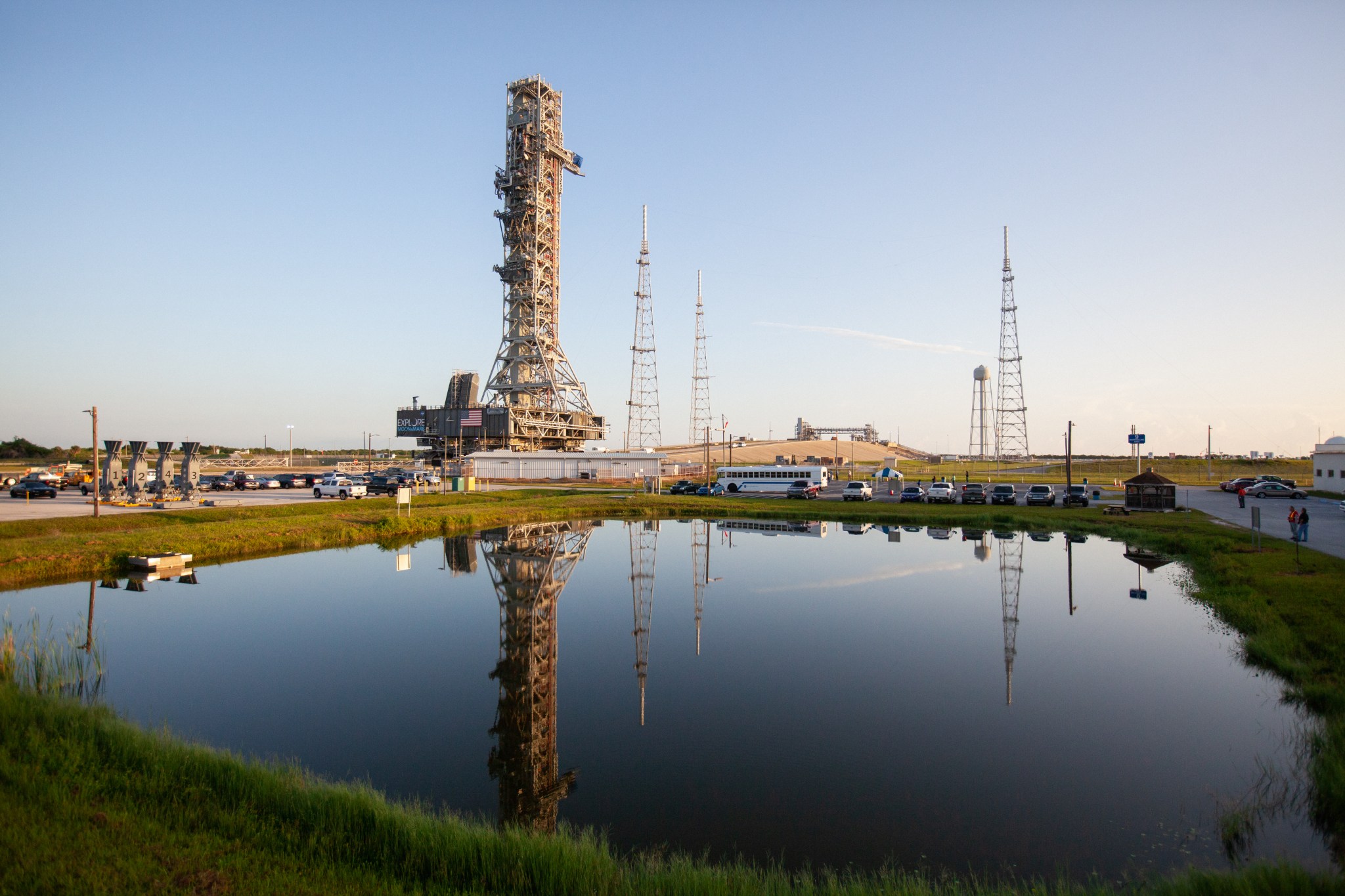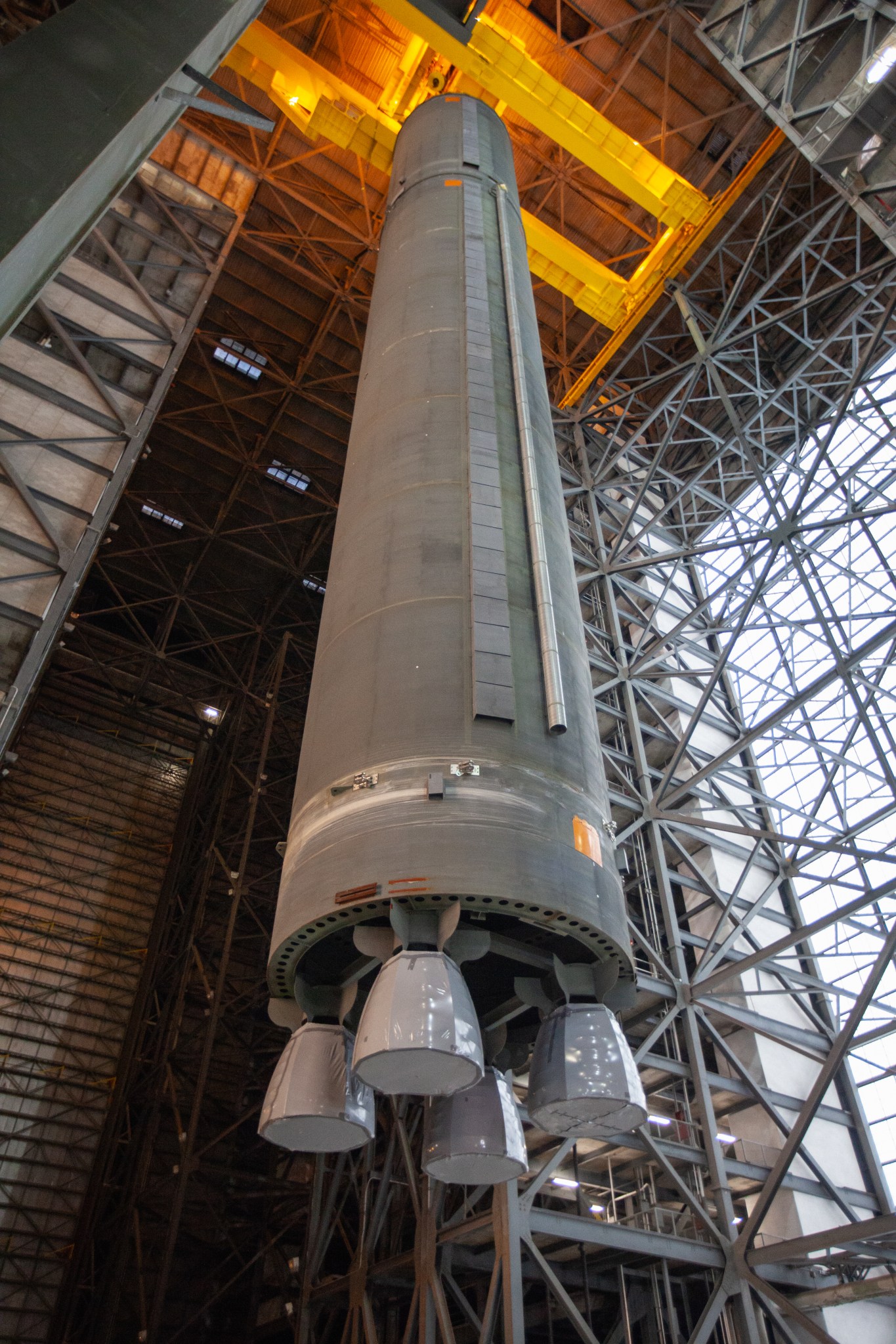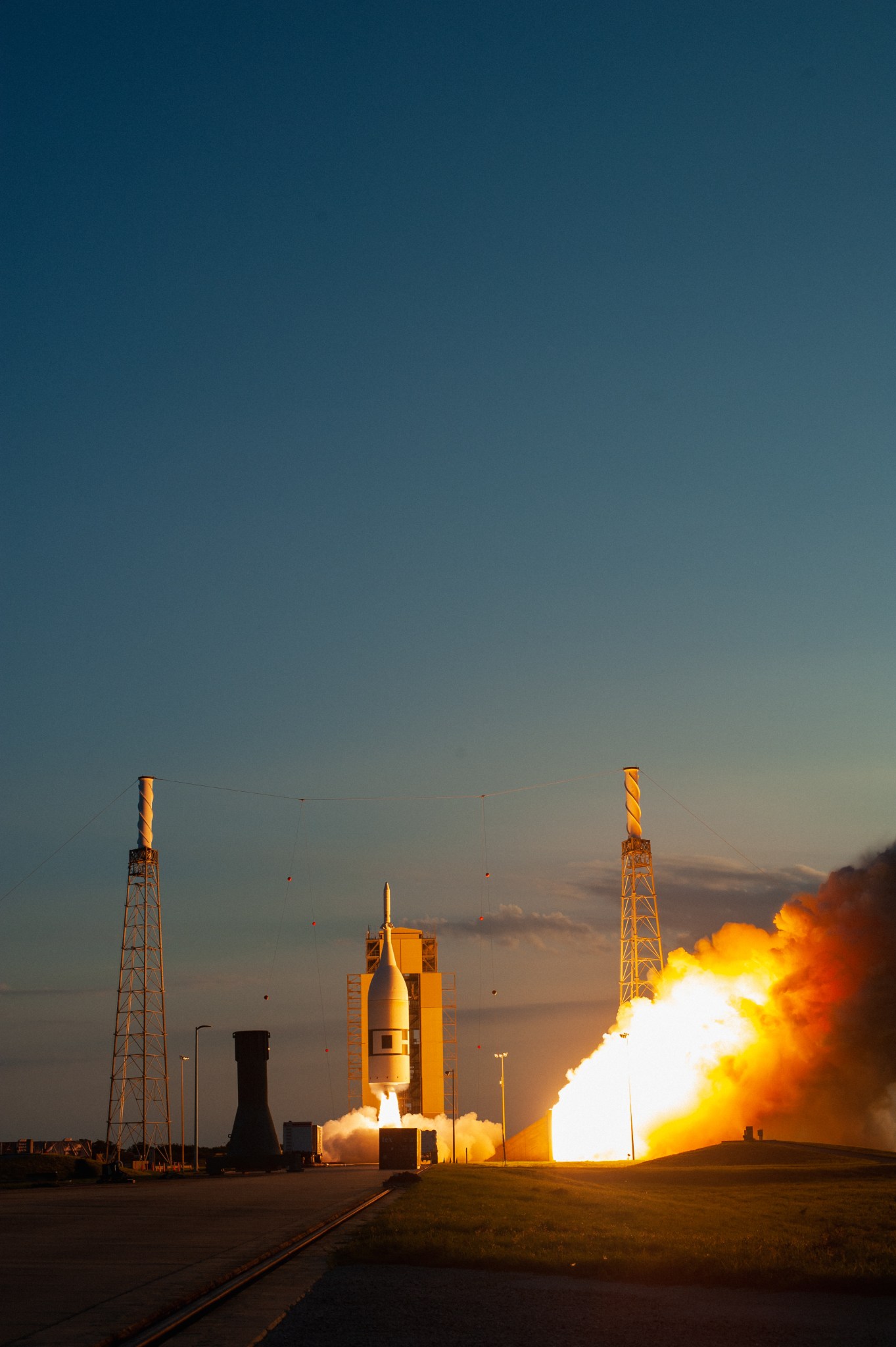By Danielle Sempsrott
NASA’s Kennedy Space Center
As 2019 draws to a close, teams at NASA’s Kennedy Space Center in Florida have been hard at work preparing for the agency’s Artemis I launch – the first test flight of the Space Launch System (SLS) rocket to send the Orion spacecraft around the Moon. This mission is the first in a series designed to support NASA’s Artemis program and broader Moon to Mars exploration approach.
NASA’s Exploration Ground Systems (EGS) is actively working to modify the infrastructure and ground support equipment necessary to process the launch and recovery of SLS and Orion. The mobile launcher – the 380-foot-tall ground structure that will be used to assemble, process and launch SLS – has undergone integrated testing inside the Vehicle Assembly Building and at newly renovated Launch Pad 39B, validating it can communicate effectively with the facility systems and ground systems to perform appropriately during launch.
The EGS team responsible for carrying out launch operations – those individuals who will actually assemble the rocket and launch it – also has been getting some practice in. The launch team, led by Launch Director Charlie Blackwell-Thompson, has been performing training simulations inside firing room 1 in Kennedy’s Launch Control Center. These exercises will certify the team is ready for launch and can work through any type of issue in real-time.
“2019 was all about testing all of our systems and software to make sure that we’re ready when the flight hardware gets here” said Mike Bolger, manager of the EGS program at Kennedy. “This was really our year to start the transition out of a development phase and to basically get ready for operations.”
Engineers and technicians had the opportunity to practice offloading, maneuvering and stacking the 212-foot-long SLS core stage using a full-scale mock-up called a pathfinder. The pathfinder arrived at Kennedy on NASA’s Pegasus barge Sept. 27 and remained at the Florida spaceport for about a month before making its return trip to the agency’s Michoud Assembly Facility in Louisiana. Weighing 228,000 pounds, the pathfinder helped ensure the team is properly trained and certified before the actual core stage, slated to arrive in the summer of 2020, arrives for processing.
The Orion crew module for the uncrewed Artemis I mission was declared complete in July. After testing of the European service module – which will power the spacecraft – and the crew module, the two were structurally attached to complete the spacecraft. Teams then transported Orion to the agency’s Plum Brook Station in Ohio in late November, where it will undergo environmental testing to verify it can handle the deep space environment.
“It has been a tremendous year for the Orion team at Kennedy with the completion of the Artemis I spacecraft. To see Orion atop the rocket soon and start the first mission in NASA’s return to the Moon will be extremely rewarding,” said Scott Wilson, Orion production operations manager. “But our work doesn’t stop there. The team is deep in the trenches diligently preparing Artemis II, the first crewed mission using the Orion spacecraft.”
Also, the spacecraft’s launch abort system was put to the test in early July, demonstrating it can outrun a moving rocket and pull crew to safety in the unlikely event of an emergency abort during launch.
NASA is charged with landing the first woman and the next man on the Moon by 2024. The Gateway in lunar orbit will be a key part of the agency’s architecture of returning to the Moon, developing a sustainable presence there and getting ready for missions to Mars.
For deliveries to the Gateway, NASA will take a commercial approach– similar to the agency’s commercial resupply services missions to the International Space Station in low-Earth orbit. Home to the Gateway Logistics Element, Kennedy will lead the acquisition of commercial deliveries to deep space. The first Gateway delivery will include supplies needed for landing people on the Moon. Future services may include deliveries directly to the lunar surface and elsewhere in deep space.
“Our deep space logistics approach will be on the cutting edge of new technologies as we work with domestic and international aerospace partners,” said Gateway Logistics Element Project Manager Mark Wiese. “We are creating economic opportunity in a bold, new environment; simultaneously pioneering historic development on Earth and in deep space.”
To accomplish this task, the logistics element team issued a solicitation request in August 2019 for a multi-award, firm-fixed price, indefinite delivery/indefinite quantity contract for 15 years, with a maximum value of $7 billion. Contract awards are anticipated early next year.
Establishing a sustainable presence on and around the Moon under the Artemis program will ensure NASA remains at the forefront of human space exploration.
“With this program, NASA has another opportunity to write another chapter in the book of history,” said Bolger.




























